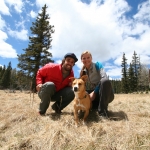If you are a student at UA COM-P, then you’ve navigated an aspect of our curriculum, Community Clinical Experience (CCE), designed to expose MS1s and MS2s to clinical medicine during our pre-clerkship years. As a family medicine fangirl since before Friends and Fruit by the Foot, I was curious about how my classmates perceived primary care after their experiences shadowing local physicians. The reviews were mixed. To be sure, there were some positive takeaways: my peers talked about forming a relationship with a preceptor or becoming more comfortable with patient encounters, for example. But some of the other voices seemed to conclude that family medicine is simply the name for a practice that involves 50% diabetes management and 50% referrals to other specialists. The conclusions weren’t unwarranted; in fact, save the time I spent at the Wesley Clinic and local residency programs, my shadowing experiences seemed to indicate that my peers’ sentiments weren’t far off track. But what I was frustrated about was that I perceived that something of an injustice had occurred. My fellow medical students had simply missed out on the opportunity to witness the unique and hard-earned joys of family medicine. They had missed family medicine at its finest.
 So what does family medicine look like when it is running on all cylinders? I believe that the answer to this question starts first and foremost with the physician. I am now three weeks into the first rotation of my third year, where I have had the unique opportunity to learn under Dr. Bierer, a small-town family physician in Show Low, AZ (population 10,000). To put it simply, I am overwhelmed with gratitude for having been placed in this rural community with a physician like Dr. Bierer. She encompasses everything about family medicine that I find compelling and meaningful. Dr. Bierer has formed long-term relationships with her patients and walks alongside them through the toughest of diagnoses. When patients bring up a concern, a hesitation of any sort, she acknowledges what they are feeling. “I get it,” she says, and you can tell that she means it. “I get it.” She takes the time to talk to patients until they understand. When tears start flowing, she draws her chair near, takes a hand, and comforts. And when her patients can no longer come to her because of their age or disability, she simply drives to them. Dr. Bierer demonstrates family medicine in its best form.
So what does family medicine look like when it is running on all cylinders? I believe that the answer to this question starts first and foremost with the physician. I am now three weeks into the first rotation of my third year, where I have had the unique opportunity to learn under Dr. Bierer, a small-town family physician in Show Low, AZ (population 10,000). To put it simply, I am overwhelmed with gratitude for having been placed in this rural community with a physician like Dr. Bierer. She encompasses everything about family medicine that I find compelling and meaningful. Dr. Bierer has formed long-term relationships with her patients and walks alongside them through the toughest of diagnoses. When patients bring up a concern, a hesitation of any sort, she acknowledges what they are feeling. “I get it,” she says, and you can tell that she means it. “I get it.” She takes the time to talk to patients until they understand. When tears start flowing, she draws her chair near, takes a hand, and comforts. And when her patients can no longer come to her because of their age or disability, she simply drives to them. Dr. Bierer demonstrates family medicine in its best form.
The humility and compassion with which Dr. Bierer serves her patients is emblematic of how I believe I am asked to live, not only as a physician but in all aspects of life. For me, this calling or intrinsic responsibility to care for people comes from my Christian faith. When I see this deep compassion incarnated by the talented doctors I shadow, it reaffirms in my heart the importance of self-sacrificial and compassionate care.
What draws me to family medicine above all else is that I see in the physician-patient relationship glimpses of the way that Jesus related with people. Throughout the New Testament, Jesus interrupts his travels and teachings by pausing, pulling up a metaphorical chair, and listening to the ailments of all people—rich or poor, Jewish or Greek or Roman, and, most revolutionarily for that epoch, man or woman. In his account of Jesus’ life, Matthew talks about a time when Jesus cured a man of leprosy. In this story, when the leprous man asks for healing, without hesitation Jesus responds, “I am willing,” and reaches out and embraces him. Jesus deeply understood the extent of this man’s pain, not only the physical discomfort but also the pang of loneliness resulting from that society’s forced isolation of lepers.
This story became much more relevant to me after traveling to a modern-day leper colony, Korah, in Addis Ababa, Ethiopia. One of the young men I met in Korah told me that this Biblical story was particularly moving for him because he had never known someone to willingly embrace a leper—it was expected that these individuals would keep their distance from the rest of society. But the power of the story goes deeper still. Jesus offered (and offers) a remedy that extends beyond just physical healing. Looking more closely at the account, the man with leprosy kneels before Jesus and says, in an act of incredible faith, “Lord, if you are willing, you can make me clean.” He didn’t ask for Jesus to simply eradicate his disease; rather, he asked for Jesus to cleanse him from his disease and all of its accompanying baggage. He wanted to be freed from the invisible chains that the stigma of leprosy had bound him in, and he wanted the inner restoration that would allow him to live his life at full capacity. When I look at who I want to be as a physician, I look to Jesus as a model because he always took the whole person into account—wholeness always was and is integral to wellness.
As a follower of Jesus, I’m inspired by his character, but my faith and trust in God runs much deeper than looking to him as a teacher. To be honest, history is filled with inspiring leaders, great healers, and people of extraordinary character. In that respect, Jesus is just one among many. What makes him unique amongst all the inspirational leaders in human history is his claim to be God. What makes him unique amongst all of the gods is his choice to enter into human history, to “become flesh and blood and make his dwelling among us,” as John’s gospel describes it. Jesus’ incarnation—literally the “in the flesh thing”—is so integral to his compassion and empathy; would you trust someone who claimed to identify with your struggles if he or she hadn’t walked a mile in your shoes? And Jesus’ empathy extends beyond his life, too. A family physician walks alongside his or her patient from birth to final breath, and those last few months of life are often when the physician is called on most. In those last few months, all vainglory and presumption fade away—you just want someone by your side who’s going to be with you through thick and thin. In his letter to the Philippian church, Paul writes, “[Jesus] did not consider equality with God something to be grasped, but made himself nothing, taking the very nature of a servant, being made in human likeness. And being found in appearance as a man, he humbled himself and became obedient to death—even to death on a cross” [1].
And there is one more reason why my faith in Jesus is integral to my practice of medicine. I believe that Jesus did not just set a good example for us to follow or offer a codified morality for us to try and replicate. Rather, I believe that, in a supernatural way, God actually enables us to live like Jesus by transforming our hearts. For example, I start off every day with the best of intentions. In the first five minutes of each day, I’m willing to serve my husband, to go the extra mile for every patient, to wear an enthusiastic smile and bring joy to others through thick and thin. And then 9 AM rolls around and I haven’t had enough coffee and my chronic back pain is flaring up and a patient is . . . and all of the best intentions seem to just float right out the window. So, if I’m going to be the best doctor that I can be, I feel like I can’t do it on my own. It’s not a knowledge problem—I know exactly who I want to be—it’s a will problem. I lose patience. I take the easy way out. That’s why I believe that in order to truly be a compassionate family physician, I need a strength that comes from outside of myself. I need the strength and compassion of someone who has been there before. I need the help of Jesus.
Kelsey Morgosh is a third-year medical student at UA COM-Phoenix, hailing from Bozeman, MT. She graduated from Williams College in Williamstown, MA with a double major in religion and biology. Her interests include backpacking trips, camping, hiking, anything involving coffee, and hanging with her husband Andy & puppy-sidekick Hank.


